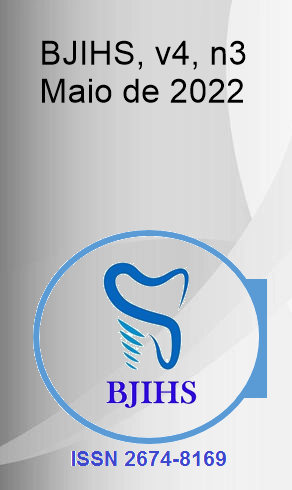Abstract
Introduction: The interproximal enamel reduction (IER) technique is a means of gaining ground as part of comprehensive orthodontic treatment. After a careful review of the literature, the article discusses interproximal enamel reduction techniques. Objectives: This article aims to outline a history, indications, contraindications, advantages, disadvantages and precautions of interproximal enamel reduction. Methodology: The keywords “interproximal”, “wear”, enamel”, “orthodontic treatment” were searched on academic google. The search resulted in more than thirty thousand articles published on the topic. The 18 articles with the highest number of citations within the academic google were selected. Results: The interproximal enamel reduction technique, when used correctly for the right cases, can serve as an effective way to gain space during orthodontic treatment. If the technique is used correctly, there is no evidence that it is in any way deleterious to dental hard or soft tissues.References
- Peck, Harvey, and Sheldon Peck. "An index for assessing tooth shape deviations as applied to the mandibular incisors." American journal of orthodontics 61.4 (1972): 384-401.
- Ballard, Murray L. "Asymmetry in tooth size: a factor in the etiology, diagnosis and treatment of malocclusion." The Angle Orthodontist 14.3 (1944): 67-70.
- Begg, P. Raymond. "Stone age man's dentition: with reference to anatomically correct occlusion, the etiology of malocclusion, and a technique for its treatment." American journal of orthodontics 40.4 (1954): 298-312.
- Hudson, Arthur Leroy. "A study of the effects of mesiodistal reduction of mandibular anterior teeth." American Journal of Orthodontics 42.8 (1956): 615-624.
- Bolton, Wayne A. "Disharmony in tooth size and its relation to the analysis and treatment of malocclusion." The Angle Orthodontist 28.3 (1958): 113-130.
- Kelsten, L. B. "A technique for realignment and stripping of crowded lower incisors." JPO: the Journal of Practical Orthodontics 3.2 (1969): 82-84.
- Rogers, Glenn A., and Martin J. Wagner. "Protection of stripped enamel surfaces with topical fluoride applications." American Journal of Orthodontics 56.6 (1969): 551-559.
- Paskow, Herbert. "Self-alignment following interproximal stripping." American Journal of Orthodontics 58.3 (1970): 240-249.
- Shillingburg Jr, H. T., and C. Scott Grace. "Thickness of enamel and dentin." Journal-Southern California Dental Association 41.1 (1973): 33-6.
- PECK, SHELDON, and HARVEY PECK. "Crown dimensions and mandibular incisor alignment." The Angle Orthodontist 42.2 (1972): 148-153.
- Tuverson, Donald L. "Anterior interocclusal relations Part I." American journal of orthodontics 78.4 (1980): 361-370.
- Doris, John M., Brentley W. Bernard, and Mladen M. Kuftinec. "A biometric study of tooth size and dental crowding." American journal of orthodontics 79.3 (1981): 326-336.
- Betteridge, Margaret Ann. "The effects of interdental stripping on the labial segments evaluated one year out of retention." British Journal of Orthodontics 8.4 (1981): 193-197.
- Sheridan JJ. Air-rotor stripping. J Clin Orthod 1985;19:43-59
- Sheridan, John J. "Air-rotor stripping update." J. Clin. Orthod. 21 (1987): 781-788.
- BU, Zachrisson. "Zachrisson on excellence finishing. Part I." J Clin Orthod 20.8 (1986): 536-556.
- Kesling, Harold D. "The philosophy of the tooth positioning appliance." American Journal of Orthodontics and Oral Surgery 31.6 (1945): 297-304.
- Begg, Percy Raymond, and Peter C. Kesling. Begg orthodontic theory and technique. WB Saunders Company, 1977.

This work is licensed under a Creative Commons Attribution 4.0 International License.
Copyright (c) 2022 Jamille dos Passos Lacerda
